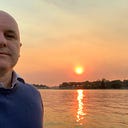The Captain James Cook statue in Hyde Park, Sydney
In 1874 NSW Premier Henry Parkes invited sculptor Thomas Woolner to design a Captain Cook statue. Woolner had previously visited Australia in 1852.
The monument was built by Cox & Sons, Thames Ditton Foundry in Surrey, United Kingdom in 1878.
The ‘colossal’ statue of Captain Cook was briefly displayed ‘in the open space nearly opposite the Athenaeum Club, in Waterloo Place, Pall Mall’ before being shipped to Sydney.
To celebrate the dedication of the monument, a public holiday was declared by the Governor Sir Hercules Robinson and cheap railway fares were offered for those travelling into Hyde Park on Tuesday 25th February 1879.
Captain James Cook explored, charted and claimed the east coast of Australia for the British Empire in 1770.
The statue was paid for by public subscription and a NSW government grant. It was reported that more than 60,000 people attended the unveiling and 12,000 joined the procession.
“The attitude is striking and vigorous, with the right hand raised high in the air in a moment of immense delight at having caught sight of land after watching through the early dawn of morning, strong in his belief that land was there, the telescope, being held in the left as no longer necessary” — Sydney Morning Herald article published on the morning of the statue be unveiled.
“This plaque marks the site of a previous plaque which disappeared in November 1991 and had the following inscription: “This tablet was affixed by The Yorkshire Society of NSW as their tribute to the memory of Captain James Cook. 1908." Councillor Frank Sartor. Lord Mayor. Sydney City Council. 1994.”
The day after the statue was unveiled, the Newcastle Morning Herald and Miners’ Advocate published this article on 26th February 1879: “The ceremony of unveiling Captain Cook’s statue took place today, and was a great success. The procession was composed of marines, volunteers, and friendly societies, and was the largest ever seen in Sydney. The ceremony was witnessed by about 60,000 people. Two hundred children sang the National Anthem. His Excellency the Governor, Sir Hercules Robinson, unveiled the statue; and; in doing so, made a speech, in which he gave a narrative of Cook’s life, and characterised him as a humane, just, and God-fearing man. He added that it would be well for the youth of Australia to imitate his nobility of character.”
James Cook is sometimes described as the son of a farm labourer who learnt to sail on collier barks between Whitby and London, and then learnt cartography while serving in the Royal Navy in Canada. Chairman of Trustees for the Captain Cook Memorial Museum in Whitby, Sophie Forgan, in 2018 challenged this view and even argued that Whitby, UK, was key to the formation of the young Cook’s skills and aptitudes. Watch the presentation on Facebook Live.
